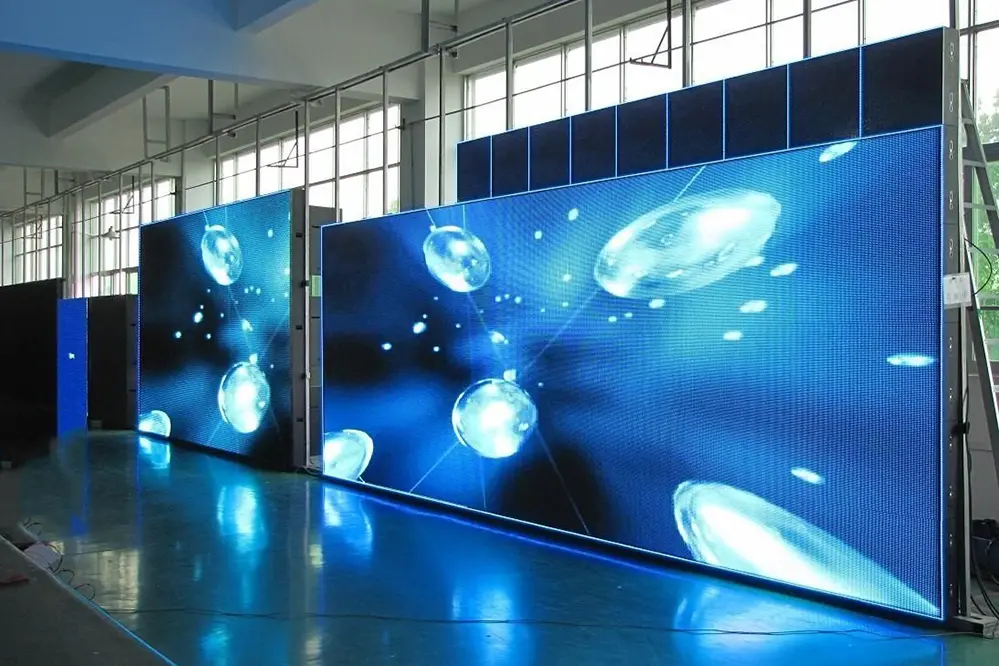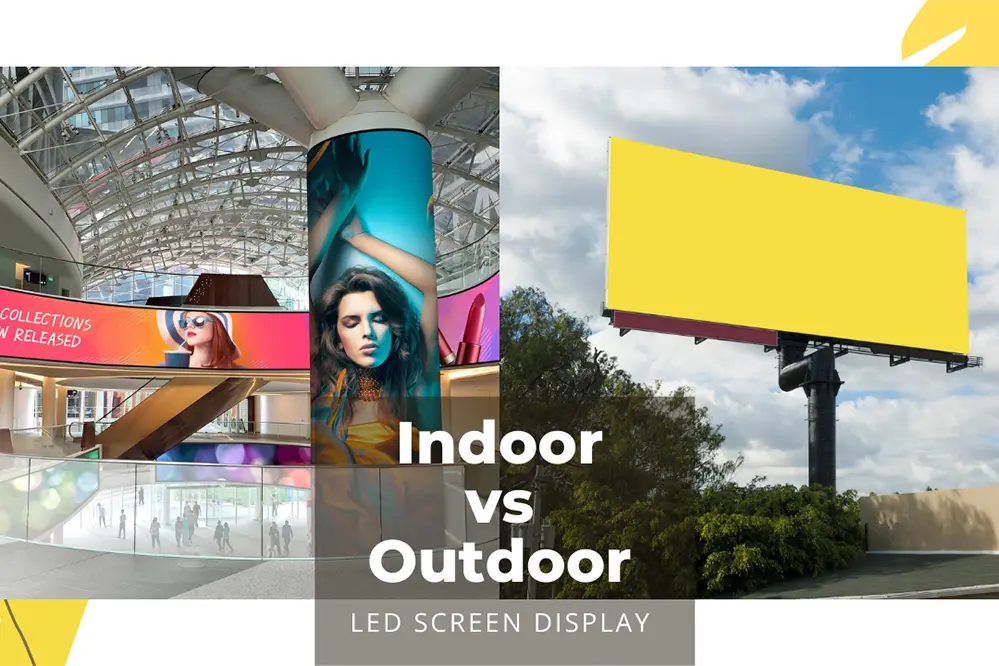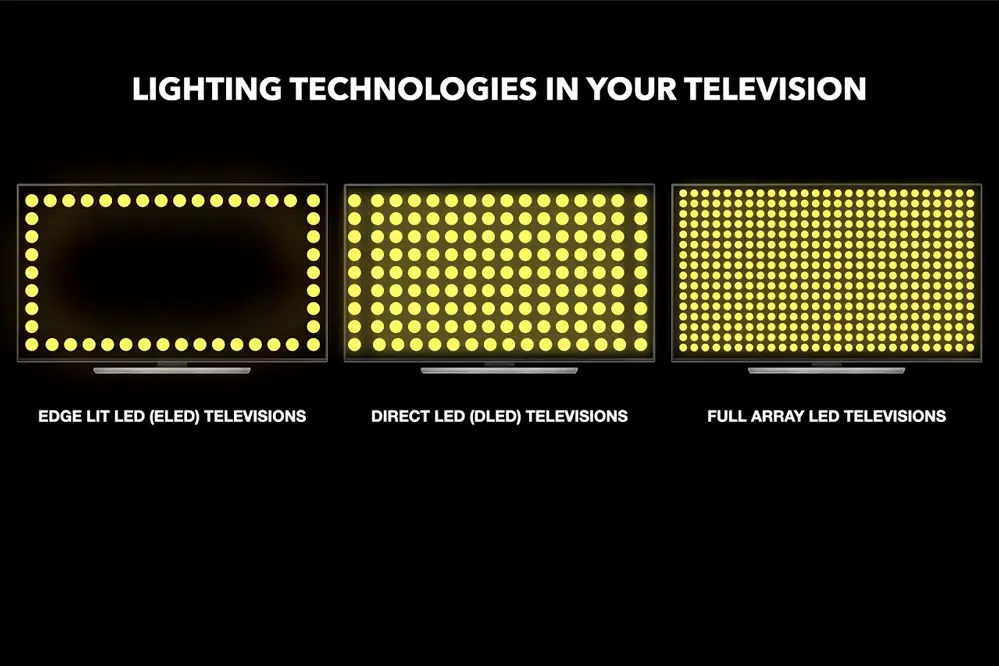Imagine a world where every surface could transform into a vibrant display, communicating messages with unparalleled clarity and brilliance, thanks to advancements in refresh rate. This is the promise of LED display technology, a field that has rapidly evolved to become a cornerstone of modern communication. Yet, despite its prevalence, misconceptions about its capabilities and limitations abound.
LED displays offer numerous benefits, from energy efficiency and longevity to stunning visual impact. They have revolutionized industries such as advertising, entertainment, and public safety, providing dynamic solutions that engage and inform audiences. This guide will explore these advantages in depth, offering insights into how LED technology can be leveraged effectively.
Embark on this illuminating journey with us, and discover how LED display technology can transform your world. Whether you’re a tech enthusiast or a business leader, this guide will provide the knowledge and inspiration you need to stay ahead in this rapidly evolving field.
What are LED Displays?

LED displays are innovative screens that utilize light-emitting diodes as pixels to portray vibrant visuals with impressive resolution. These displays offer remarkably bright, energy-efficient, and long-lasting solutions compared to traditional technologies.
Developing LED technology has revolutionized how information is presented, transcending previous limitations of CRT and LCD screens. By efficiently emitting light directly, LED displays deliver superior color accuracy and deeper contrasts.
In dynamic environments, LED displays hold their own, providing excellent visibility even under direct sunlight, making them perfect for both indoor and outdoor applications. Their versatility is unmatched, encompassing everything from smartphones to stadium screens.
The fusion of technology and design in LED displays underscores their growing importance in our digital age. Manufacturers continuously push boundaries, integrating these displays into a myriad of devices and applications.
Harnessing the power of LED displays offers opportunities to innovate how audiences experience media.
How LED Displays Work
At the heart of LED displays are light-emitting diodes, tiny, robust units that generate light in various colors. These diodes create arrays that form individual pixels, collectively producing dynamic and vivid images on the screen.
Each pixel in an LED display consists of three diodes: red, green, and blue. These foundational colors combine in varying intensities to render a full spectrum of colors.
Essentially, controlling the voltage across the LED diodes adjusts their luminosity. This precise regulation makes vibrant images possible, adapting seamlessly to display content requirements.
Interestingly, LED technology achieves impressive energy efficiency. Compared to conventional lighting systems like incandescents, LEDs convert more energy into visible light, reducing both heat production and energy consumption.
This efficiency is enhanced by the inherent durability and longevity of LEDs. They lack filaments or gases, making them resilient and extending their lifespan significantly compared to other light forms, minimizing maintenance costs extensively.
Ultimately, the operation of LED displays is a testament to modern engineering. By harnessing semiconductor technologies, they exemplify innovative display solutions that redefine how we perceive and interact with digital content.
Types of LED Displays
Understanding the different types of LED displays offers invaluable insights into the versatility of this dynamic technology.
In recent years, polysilicon displays, a lesser-known LED variant, showcased vast potential, propelling innovations that made high-resolution screen experiences ever more captivating, knowledgeably blending performance with longevity.
Today, it’s not just static screens; the market’s array of LED displays greatly enhances a multitude of visual experiences across industries. From expansive digital billboards to immersive home theater setups, these technologies redefine engagement.
Examining the spectrum of available types, starting from flexible displays that mold into any shape or the 3D, transparent and micro LED developments, the future possibilities are indeed extraordinary.
An informed choice reflects not only the robust technological capabilities LED displays offer but also their transformative impact.
Advantages of LED Displays
LED displays are revolutionizing the way we perceive digital content with their brilliant illumination and unparalleled clarity, thus ushering in innovation and inspiration for countless applications.
They’re notably more energy-efficient compared to older technologies, thus saving money and reducing carbon footprints.
These displays exhibit extraordinary longevity, often exceeding 100,000 hours of operation, offering a journey of vibrant viewing experiences with minimal maintenance and uninterrupted performance, ensuring reliability, sustainability, and satisfaction for all users.
The benefits extend further, offering high-definition resolutions, flexibility in design, and a spectrum of color accuracy that blends seamlessly into various environments, making LEDs a popular choice for advertisers, educators, and broadcasters alike. The phrase “less is more” perfectly encapsulates LED’s promise: efficiency without sacrifice, illuminating the future.
Disadvantages of LED Displays
Despite their numerous advantages, LED displays do have downsides.
The initial cost of LED displays can be quite high. This factor might pose a challenge for businesses and individuals considering the transition, as investing in modern display technology demands a significant upfront expense. Additionally, while the cost is often offset by energy savings and longevity, it can still deter some potential users who are hesitant to make such an investment without immediate cost benefits.
The brightness and refresh rate of LED displays can cause light pollution.
There are also concerns about blue light emissions – which have been linked to potential disruptions to sleep patterns – making certain contexts, such as prolonged nighttime use, a concern.
Consideration must be given to the environmental implications of LED display disposal, particularly regarding electronic waste disposal, despite efforts to innovate and recycle. It is essential to address these limitations as the technology continues to evolve, ensuring that the growth and adoption of LED displays contribute positively to progress while minimizing any adverse consequences.
Applications of LED Displays
LED displays have revolutionized the way we interact with information and advertising, and they offer limitless potential for innovation and communication.
In retail, LED screens enhance visual appeal and customer interaction.
These vibrant, energy-efficient tools provide dynamic advertising opportunities, driving engagement in environments such as shopping malls, airports, and urban centers. LED technology’s versatility, brightness, and scalability make it an ideal choice for impactful, immersive experiences.
In the entertainment industry, LED displays transform the stage into a canvas of digital artistry, enhancing response time for real-time visual effects. By offering customizable backgrounds and interactive content, it becomes possible to create visually striking performances. For instance, concerts and theater productions utilize LEDs to push creative boundaries and redefine audience experiences.
Indoor vs. Outdoor LED Displays

Indoor and outdoor LED displays represent a spectrum of technological adaptability, tailored to unique environmental requirements and viewing conditions, including the importance of an optimal viewing angle. Indoor displays thrive in controlled light and temperature settings, making them ideal for areas like shopping centers and conference rooms. These environments benefit from a more refined pixel pitch, providing high-resolution visual quality suitable for closer viewing distances.
In contrast, outdoor LED displays embrace the challenges of harsher, variable conditions like weather or direct sunlight. Designed to withstand the elements, these displays offer high brightness and durability, which are crucial for outdoor advertising and public information dissemination. By extending their reach to stadiums, billboards, and intelligent traffic systems, outdoor LED displays effectively captivate viewers with clear, vibrant imagery, ensuring messages are communicated powerfully and persuasively, regardless of the environment.
Key Differences
Indoor LED displays prioritize precision, featuring closer pixel pitch and lower brightness levels, ideal for controlled environments. They excel in delivering detailed images where ambient light is minimal, with high resolution for precise image clarity.
Conversely, outdoor LED displays are engineered for resilience, with higher brightness and weatherproof design for variable conditions. This ensures visibility and robustness critical for outdoor applications.
Outdoor LED displays can reach brightness levels over ten times higher than their indoor counterparts.
Understanding these unique requirements is vital for selecting the correct display type. Consider where it will be installed, viewing distance, and desired audience impact. Indoor installations cater to detail and clarity, while outdoor installations require durability and visibility against environmental challenges. Evaluating these factors ensures optimal performance and message delivery across diverse settings.
Best Use Cases
LED displays have revolutionized how we capture audiences, making them essential in a variety of settings.
- Retail Stores: Engaging customers with dynamic promotions and enhancing the shopping experience.
- Sports Venues: Delivering live scores and replays with impeccable clarity and real-time updates.
- Transportation Hubs: Providing travelers with vital information like schedules and announcements.
- Corporate Events: Showcasing presentations and branding materials with immersive visual appeal.
- Billboards: Capturing attention outdoors with high visibility in all weather conditions.
Each scenario leverages the unmatched versatility and vividness that LED displays offer, emphasizing the importance of color calibration for accurate and consistent visual output.
Selecting the right display ensures the intended impact, elevating experiences and communications seamlessly.
Let LED displays illuminate your path to extraordinary engagement and visibility.
LED Display Technologies

LED displays represent cutting-edge technology, offering unparalleled brightness and vivid colors for various applications and settings.
There are primarily three main technologies used in LED displays: Direct View LED, Edge-Lit LED, and Full-Array LED, each using a different light matrix setup. Direct View LEDs provide an intense, vibrant picture by arranging multiple LEDs directly across the screen’s surface, allowing for excellent image quality and depth. In contrast, Edge-Lit and Full-Array employ LEDs situated along the edge or evenly across the back of the display, respectively, enabling thinner screens with decent illumination consistency.
In particular, Direct View LEDs are prominently used in large-format displays such as stadium screens. By leveraging their ability to scale seamlessly while maintaining image purity, these displays deliver an impressive and immersive viewing experience essential for public viewability and audience engagement.
Moreover, the evolution of MicroLED and MiniLED technologies is shaping the future of LED displays with remarkable efficacy. MicroLEDs use microscopic light-emitting diodes to produce heightened contrast ratios and energy efficiency, making them ideal for next-generation television displays and digital signage. Meanwhile, MiniLEDs enhance backlighting in existing LCD displays by utilizing smaller LEDs for improved precision and brilliance, revolutionizing applications requiring detailed imagery.
How to Choose the Right LED Display
Selecting the right LED display involves careful consideration of size, pixel pitch, and brightness. Each factor significantly influences the visual impact of the display, providing a customized viewing experience tailored to your specific needs.
First, determine the intended application of the LED display to guide your decision-making process.
For instance, smaller pixel pitches are ideal for close-range viewing, ensuring clarity, detail, and high resolution in the display.
Conversely, larger venues require higher brightness levels and larger display sizes to maintain visibility and engagement.
Consider energy efficiency if sustainability is a priority. Opt for LED displays that incorporate energy-saving technologies and offer long-term operational cost benefits without compromising performance.
Ultimately, the goal is to align the display’s attributes with the environment in which it will be utilized. Achieving harmony in these factors ensures an inspiring final result that captivates and informs.
Installation and Maintenance Tips
Understanding the essentials of LED display installation ensures your project gets off to a smooth start.
During installation, it’s crucial to assemble a dedicated team with expertise in electrical systems, as well as an understanding of LED technology. Proper alignment, calibration, refresh rate, and response time increase the system’s efficacy, leading to an excellent display performance. Securely mounting the display prevents accidents and keeps the visual branding intact, offering uninterrupted service.
Maintenance is equally vital for a prolonged lifespan and optimal function. By instituting regular check-ups, you’ll be able to identify minor issues before they evolve into costly repairs. Integrate a schedule that inspects connections, assesses pixel functionality, and cleans any debris affecting the screen.
In summary, competent installation paired with consistent maintenance ensures your LED display not only meets your audience’s expectations but also transforms any venue with captivating and vibrant imagery. A holistic approach embraces both these facets, maximizing the longevity and impact of LED displays, making them a worthwhile investment.
Future Trends in LED Display Technology
As we look towards the horizon, the evolution of LED display technology promises extraordinary advancements. Our future will be illuminated by cutting-edge innovations that redefine digital visualization.
In recent years, microLED technology has taken center stage, offering unparalleled brightness and contrast that surpass older models. Imagine an LED display that’s not only breathtakingly vibrant but also astonishingly energy-efficient.
Moreover, flexible and transparent displays are making headway, poised to transform industries from retail to automotive. Visual displays will become seamless parts of everyday life, merging aesthetic beauty with practical function.
Artificial intelligence is set to revolutionize LED technology, enabling displays to adapt dynamically to changing environments and user preferences. This synergy of AI and LED heralds smarter and more personalized visual experiences.
In this era of rapid technological advancement, LED displays are set to become more integral and transformative than ever.
A Comprehensive Guide to LED Display Solutions
As we navigate the digital era, a comprehensive guide to LED display solutions empowers us to harness the brilliance of technology, paving new paths of innovation, and casting our visions in light.
LED displays revolutionize how vibrant digital content is produced and consumed.
From vivid advertising screens to dynamic architectural designs, LED technology creates a realm of limitless possibilities for a myriad of applications. Diverse solutions, coupled with advancements in connectivity, sustainability, and efficiency, guide us toward achieving unparalleled experiences.
Every industry now thrives on tapping into the vast potential of LED technology to communicate and engage. From small businesses to large enterprises, adopting LED display solutions is not simply a trend; it represents a commitment to future-proofing operations and maximizing impact. This guide serves as a “beacon” for understanding and applying these advancements effectively.
Conclusion
LED display technology has revolutionized communication by transforming surfaces into vibrant displays with unparalleled clarity and brilliance. Despite its widespread use, misconceptions about its capabilities and limitations persist, highlighting the need for a deeper understanding of this transformative technology.
The benefits of LED displays are vast, including energy efficiency, longevity, and stunning visual impact. These features have significantly influenced industries such as advertising, entertainment, and public safety, offering dynamic solutions that engage and inform audiences in innovative ways.
This guide delves into the numerous advantages of LED technology, providing valuable insights into how it can be effectively leveraged across various applications. Whether you’re a tech enthusiast or a business leader, understanding these advancements is crucial to staying ahead in this rapidly evolving field.





